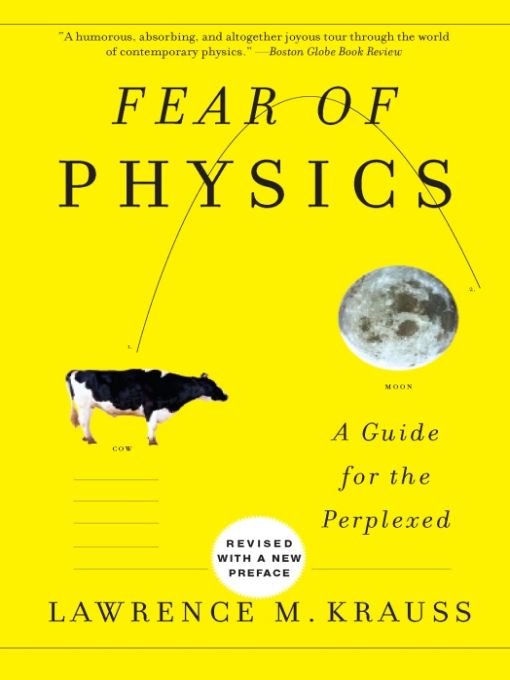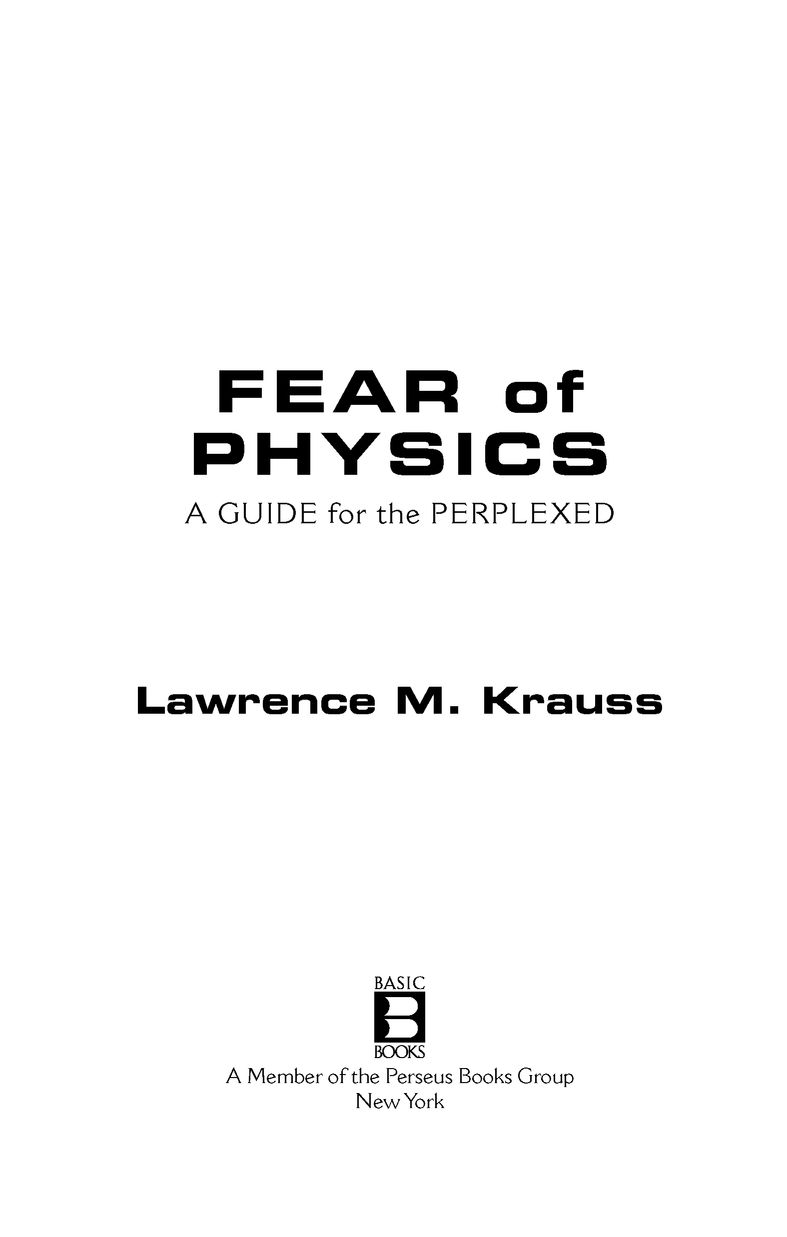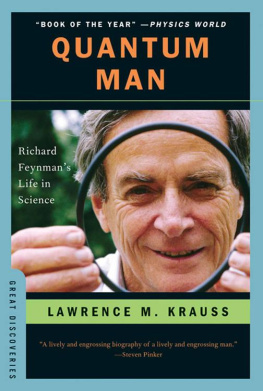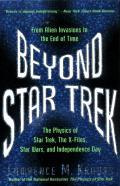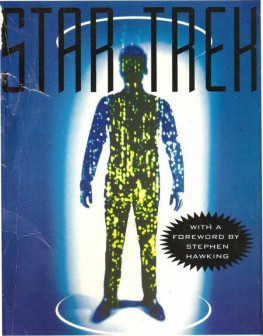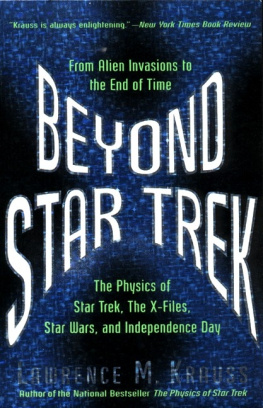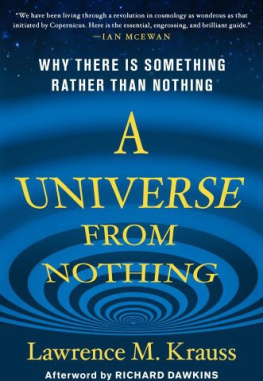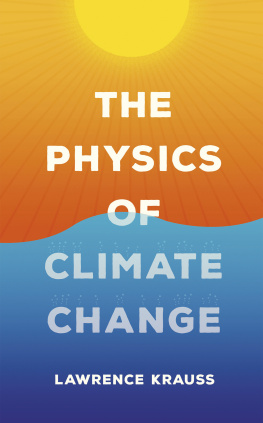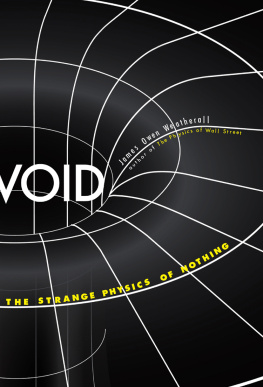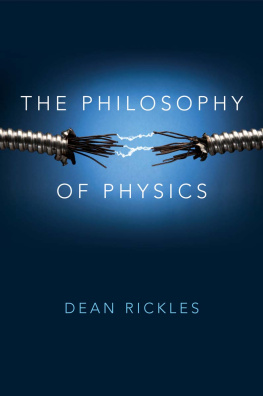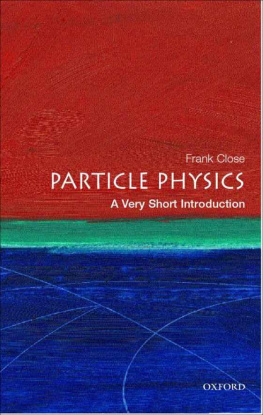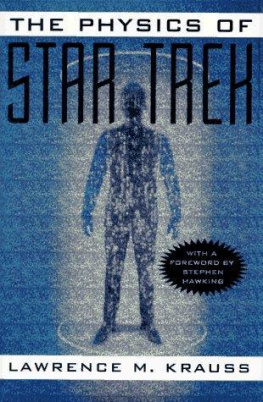Table of Contents
For Kate and Lilli
PREFACE TO THE NEW EDITION
I was quite excited when my editors at Basic contacted me, asking if I would be interested in revising and updating Fear of Physics. In the fifteen years since this book first appeared, a tremendous amount has changed in our understanding of forefront concepts in the world of physics, and even some of our guiding principles have altered. In addition, my own perspective on what issues are important, especially vis--vis public interest in science, has also evolved, both due to my own evolution as a scientist, but also to my subsequent experiences as a writer.
At the same time, I was surprised about ten years ago when I was delivering a series of lectures to high school physics teachers to discover that this book had become something of a cult classic, often handed out to promising high school students to help turn them on to modern topics in physics. One physics club sent me a copy of a T-shirt they had designed with a cow as a sphere in honor of the book. Thus, in spite of the fact that I originally intended this book for an audience with little or no background in science, indeed to include many who might otherwise feel intimidated by physics, I realized that something about the connection between forefront physics and fundamental ideas excited budding young scientists too, as well it should.
With these thoughts in mind, I have revised the book from beginning to end, keeping within the original framework, but updating it with new material to make it more accessible to some, more exciting for others, and to capture the evolving nature of science right up to the present moment as we explore the distant reaches of the universe. I hope that you enjoy this new version as much as I have enjoyed revisiting it.
Lawrence M. Krauss
Cleveland, Ohio
November 2006
PREFACE
When someone at a party learns that I am a physicist, he or she immediately either (1) changes the subject, or (2) asks about the big bang, other universes, warp drive, quarks, or one of the trilogy of recent super developments: superconductors, superstrings, or supercolliders. Even people who freely admit having avoided physics in high school and never looked back are still sometimes fascinated with the esoteric phenomena at the forefront of the field, although they often dont realize it is physics they are interested in. Physics deals with many of the cosmic questions that, in one way or another, everyone has mused about. However, physics often appears foreign and inaccessible, due in part to the fact that research at the forefront is at times far removed from everyday experience.
But there is a more basic obstacle that gets in the way of appreciating where modern physics is going. The way physicists approach problems, and the language they use, is also removed from the mainstream of modern-day activity for most people. Without a common gestalt to guide the observer, the menagerie of phenomena and concepts attached to modern physics remains disconnected and intimidating.
To present modern physics as I understand it, I thought I would concentrate not on particular theories but rather on the tools that guide physicists in their work. If one wants to gain an appreciation for the current directions of modern physics, both as a human intellectual activity and as the basis for our modern picture of the universe, it is much easier to do so if you first have some notion of how the enterprise is carried out. What I want to present here, then, is not so much a trail guide through the modern physics jungle as a guide on how to hike in the first place: what equipment to bring, how to avoid cliffs and dead ends, what kind of trails are likely to be the most exciting, and how to get home safely.
Physicists themselves can follow modern developments only because they are largely based on the same handful of fundamental ideas that have been successfully applied to study the everyday world. Physical theory at present deals with phenomena occurring on scales of space and time varying by over sixty orders of magnitudemeaning that the ratio of the largest to the smallest is 1 followed by 60 zeros. Experiments cover a somewhat smaller range, but not much smaller. Yet amid this menagerie, any phenomenon described by one physicist is generally accessible to any other through the use of perhaps a dozen basic concepts. No other realm of human knowledge is either so extensive or so simply framed.
Partly for this reason, this book is short. The tools that guide physics are few in number, and while it may take an advanced degree to master them, it doesnt require a massive tome to elucidate them. So as you wander through each of the six chapters (once you BUY it, of course!), you will find a discussion of a key idea or theme that guides physicists in their search. To illustrate these ideas, I have chosen examples that run the gamut in physics, from the basics to the stuff the New York Times science writers will cover this week. The choice may seem at times eclectic. But, while concentrating at the beginning on what has guided physicists to get where we are, I will be concentrating by the end on what is leading us to go where we are going.
Also, for this reason, I have taken the liberty to introduce concepts that are quite modern to illustrate a theme. Some readers may find these a pleasant relief from ideas they are already familiar with. Others may find them momentarily elusive. Some of these ideas, while fundamental, have never before been presented in the popular literature. No matter. You wont be tested. My intent is more to present the flavor of physics than it is to master its substance. I think it is insight, rather than a working knowledge, that is most useful and is needed by nonscientists in todays world, and so it is insight that I am aiming at.
Most important, there are subtle and wonderful connections between many of the short vignettes I shall present that run below the surface. It is these connections that form the fabric of physics. It is the joy of the theoretical physicist to discover them, and of the experimentalist to test their strength. In the end, they make physics accessible. If you get interested enough to crave more comprehensive discussions, there are lots of further resources.
Finally, I want to stress that physics is a human creative intellectual activity, like art and music. Physics has helped forge our cultural experience. I am not sure what will be most influential in the legacy we pass on, but I am sure that it is a grave mistake to ignore the cultural aspect of our scientific tradition. In the end, what science does is change the way we think about the world and our place within it. To be scientifically illiterate is to remain essentially uncultured. And the chief virtue of cultural activitybe it art, music, literature, or scienceis the way it enriches our lives. Through it we can experience joy, excitement, beauty, mystery, adventure. The only thing that I think really differentiates science from the other things on this list is that the threshold is a little bit higher before the feedback starts. Indeed, the major justification for much of what we physicists do is the personal pleasure we get from doing physics. There is universal joy in making new connections. There is excitement and beauty in both the diversity of the physical world and the simplicity of its fundamental workings. So, with apologies to Erica Jong, this book is dedicated to the question: Is it possible for the average person to shed inhibitions, let go, and just enjoy the basic, simple pleasure of physics? I hope so.

